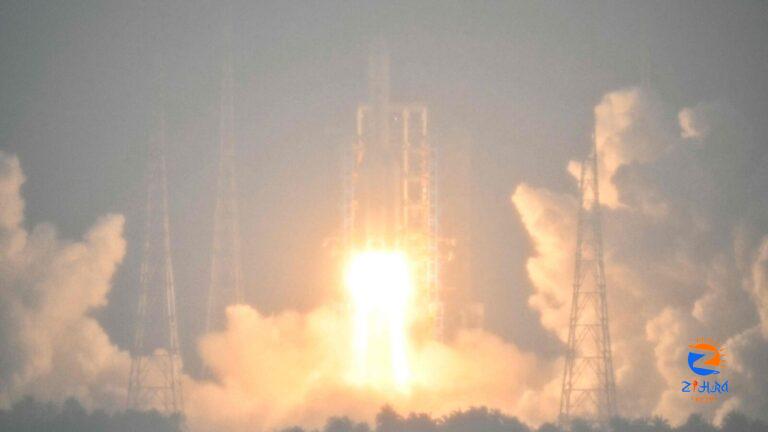
[ad_1]
China launched the Chang’e-6 lunar probe atop the Long March-5 Y8 carrier rocket from the Wenchang Spacecraft Launch Site in south China’s Hainan Province on Friday.
The lunar probe is set to collect samples from the far side of the moon (not visible from the Earth), making this mission the first of its kind in human history as Beijing pushes ahead with an ambitious programme that aims to send a crewed lunar mission by 2030.
Watch as China’s Change’e-6 mission lifts off:
The mission, dubbed Chang’e, is named after the mythical Chinese moon goddess. Chang’e-6 is the latest in a series of Chinese lunar missions. This mission will last 53 days. Chang’e-4 mission was the first to visit the far side of the moon in 2019. It included a rover to explore the moon’s Von Karman crater.
The Chang’e-6 mission will land in South Pole-Aitken Bason on the far side of the moon, China’s state media CGTN reported on Friday. The mission is tasked with collecting and returning samples from the moon’s mysterious far side for research purpose. This is the first endeavor of its kind in the history of human lunar exploration.
ALSO READ: How will China change in 10 years under Xi Jinping’s common prosperity push? Citizens speak out
The Global Times cited the China National Space Administration (CNSA) as saying that the Chang’e-6 mission will carry a number of international payloads to the Moon, including the European Space Agency’s lunar surface ion analyzer, France’s radon detection instrument, Italy’s laser corner reflector, and a CubeSat from Pakistan.
Pakistan launched its first satellite mission to the moon, iCube Qamar, on board China’s Chang’E6 from Hainan, China. The satellite has been designed and developed by the Institute of Space Technology (IST) in collaboration with China’s Shanghai University and Pakistan’s national space agency SUPARCO.
The primary purpose of CubeSats is to facilitate scientific research, technology development, and educational initiatives in space exploration.
Dr Khurram Khurshid, a member of the Core Committee at the IST, told Geo News that Pakistan’s satellite — being carried by China’s Long March-5 rocket — will reach the lunar orbit in five days and will circle around the moon for three to six months.
He was quoted as saying that different pictures of the surface of the moon will be taken with the help of satellite after which Pakistan will have its own satellite images of the moon for research.
Unlock a world of Benefits! From insightful newsletters to real-time stock tracking, breaking news and a personalized newsfeed – it’s all here, just a click away! Login Now!
Download The Mint News App to get Daily Market Updates.
Published: 03 May 2024, 03:13 PM IST
[ad_2]